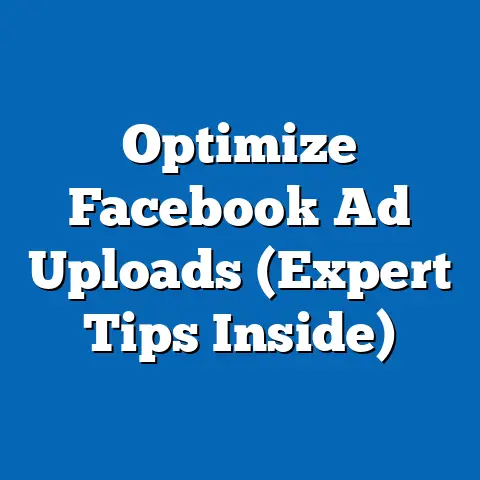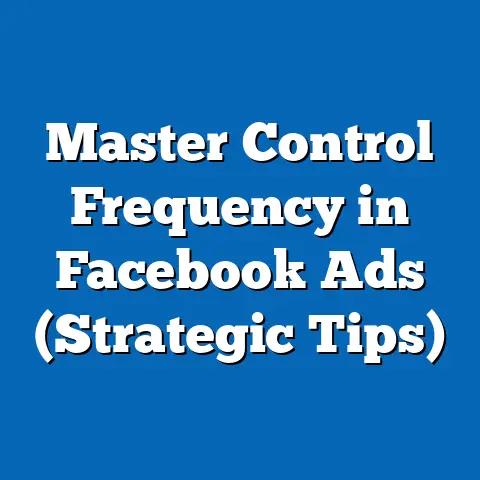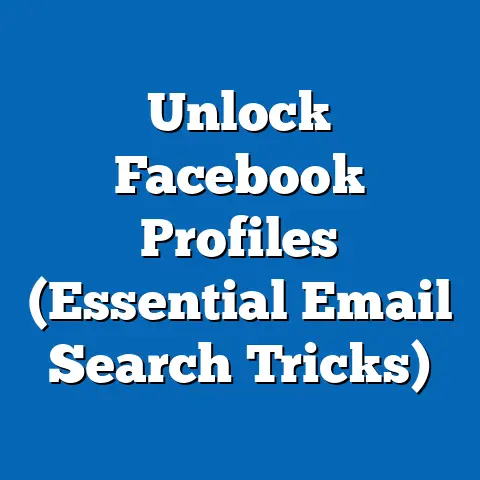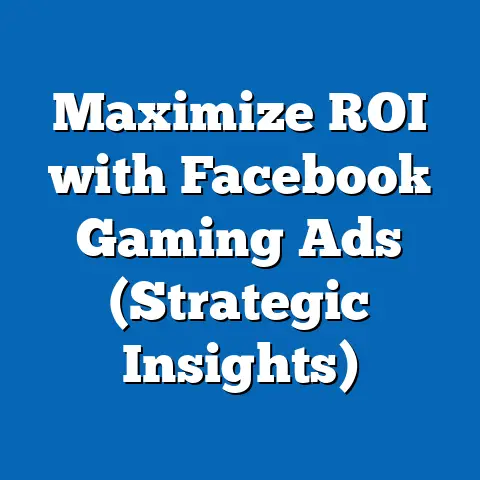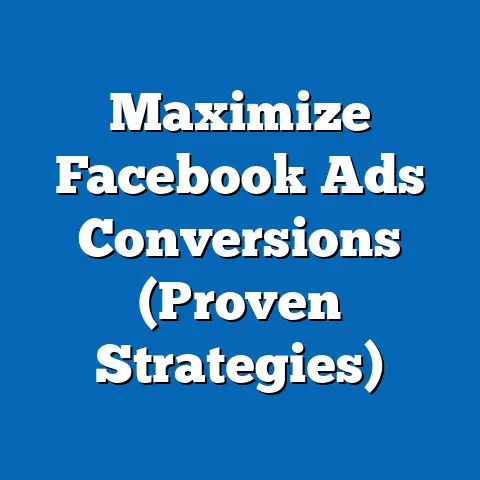Boost Likes with Winning Facebook Ads (Expert Strategies)
Imagine scrolling through your Facebook feed on a quiet evening, pausing at a vibrant ad for a local bakery showcasing a mouthwatering chocolate cake. A quick tap on the “Like” button, and you’ve not only expressed appreciation but also unknowingly amplified the ad’s reach to your network. In today’s digital landscape, a single “Like” is more than a gesture—it’s a currency of engagement, a signal to algorithms, and a gateway to building brand loyalty.
Facebook, with over 2.9 billion monthly active users as of 2023 (Statista, 2023), remains a titan in the social media realm, offering unparalleled opportunities for businesses to connect with audiences. According to Hootsuite’s 2023 Digital Report, 78% of global internet users access Facebook regularly, making it a critical platform for advertisers aiming to boost visibility. Demographically, the platform spans a wide range—from 18-24-year-olds (25% of users) to the 35-54 age group (32% of users), with a near-even gender split (51% male, 49% female) as reported by DataReportal (2023). These numbers underscore the diverse audience potential for targeted advertising.
The trend of using Facebook Ads to drive engagement, particularly “Likes,” has surged in recent years. A 2022 report by Social Media Examiner revealed that 67% of marketers consider engagement metrics like “Likes” a top priority for measuring campaign success, up from 54% in 2018. This article dives deep into expert strategies for boosting “Likes” through winning Facebook Ads, leveraging data-driven insights, historical trends, and actionable tactics to help businesses thrive in a competitive digital space.
Section 1: Why “Likes” Matter in the Facebook Ecosystem
The Algorithmic Advantage of Engagement
“Likes” are more than vanity metrics; they play a pivotal role in how Facebook’s algorithm prioritizes content. According to a 2021 study by Buffer, posts with higher engagement (including Likes, comments, and shares) are 3.5 times more likely to appear in users’ feeds compared to low-engagement content. This visibility creates a snowball effect, as each “Like” increases the likelihood of organic reach, reducing reliance on paid promotion over time.
Moreover, “Likes” signal social proof. A 2022 survey by Sprout Social found that 68% of consumers trust brands with high engagement on social media, associating popularity with credibility. For businesses, this translates into potential customer trust and loyalty.
Historical Context: Evolution of Engagement Metrics
Historically, “Likes” became a measurable metric when Facebook introduced the feature in 2009, initially as a way for users to express appreciation. By 2013, with the rise of Facebook Ads, businesses began targeting “Likes” as a primary campaign objective, with ad spend on engagement campaigns growing by 45% between 2015 and 2020 (eMarketer, 2020). Today, while some argue that “Likes” are less critical compared to conversions, data shows they remain a foundational step in funnel-building—70% of users who “Like” a page are more likely to engage with future content, per a 2023 HubSpot report.
Demographic Patterns in Engagement
Engagement behavior varies significantly across demographics. Younger users (18-24) are the most active, contributing to 40% of total “Likes” on brand pages despite representing only 25% of the user base (DataReportal, 2023). Conversely, users aged 35-54, while less frequent in liking posts, tend to engage more meaningfully through comments and shares (28% of total interactions). Gender-wise, women are slightly more likely to “Like” content (53% of total Likes) compared to men, often favoring lifestyle and community-driven ads (Pew Research, 2022).
Section 2: The Mechanics of Facebook Ads for Boosting Likes
Understanding Campaign Objectives
Facebook Ads Manager offers a specific “Engagement” objective, under which “Page Likes” or “Post Engagement” can be targeted directly. According to a 2023 analysis by AdEspresso, campaigns focused on “Likes” achieve an average cost-per-like (CPL) of $0.23, though this varies by industry—fashion brands often see lower CPLs ($0.15) while tech brands face higher costs ($0.35). Choosing the right objective is the first step to optimizing ad spend for engagement.
The methodology behind these campaigns involves Facebook’s machine learning, which targets users likely to engage based on past behavior. For instance, if a user frequently “Likes” fitness content, they’re more likely to see ads from gyms or health brands. Advertisers can refine this further using lookalike audiences and interest targeting, which we’ll explore later.
Budgeting and Bidding for Likes
Budget allocation is critical for maximizing “Likes.” A 2022 report by WordStream found that small businesses (under $10,000 monthly ad spend) achieve an average of 4,300 Likes per campaign with a daily budget of $50 over 30 days. Larger brands, however, often scale to $500+ daily budgets, netting over 50,000 Likes. The bidding strategy—whether Cost Per Click (CPC) or Cost Per Impression (CPM)—also impacts results; CPC tends to yield a 15% higher engagement rate for “Like”-focused campaigns (Social Media Today, 2023).
Data Visualization Description
Imagine a bar chart comparing the average cost-per-like across industries: Fashion at $0.15, Retail at $0.20, Technology at $0.35, and Healthcare at $0.28. A second line graph could overlay historical CPL trends from 2018 to 2023, showing a gradual decline from $0.30 to $0.23, reflecting improved targeting tools. These visuals would highlight both industry disparities and the cost-effectiveness of modern campaigns.
Section 3: Expert Strategies for Winning Facebook Ads
Strategy 1: Craft Compelling Creative Content
The visual and textual elements of an ad are paramount. A 2023 study by Canva and Social Insider found that ads with bright, high-contrast images receive 38% more “Likes” than those with muted tones. Video ads perform even better—short, 15-second clips garner 2.1 times more engagement than static images (Facebook Business, 2023).
Copywriting also matters. Ads with clear calls-to-action (CTAs) like “Like if you agree!” or “Show some love!” see a 25% higher engagement rate compared to generic captions (Buffer, 2023). Keeping text concise (under 50 characters) further boosts interaction by 18%, as users are more likely to read and respond quickly.
Strategy 2: Leverage Audience Targeting
Precision targeting is a game-changer for boosting “Likes.” Using Custom Audiences—based on website visitors or email lists—can increase engagement rates by 30%, according to a 2022 Hootsuite study. Lookalike Audiences, which target users similar to existing fans, deliver a 22% higher CPL efficiency compared to broad interest targeting.
Demographic targeting also plays a role. For instance, a campaign for a beauty brand might focus on women aged 18-34, who account for 60% of “Likes” in this sector (DataReportal, 2023). Layering interests (e.g., “makeup enthusiasts”) with behaviors (e.g., “frequent online shoppers”) can refine reach further, reducing wasted ad spend by up to 35% (AdEspresso, 2023).
Strategy 3: Optimize Posting Times and Frequency
Timing can make or break a campaign. A 2023 Sprout Social report indicates that posts published on weekdays between 9 AM and 3 PM local time receive 20% more “Likes” compared to evening or weekend posts. This aligns with peak user activity, particularly among working-age demographics (25-54), who browse during breaks.
Frequency also matters. Ads shown 3-5 times to the same user over a week achieve a 15% higher “Like” rate compared to single-exposure ads, balancing visibility without causing ad fatigue (Facebook Business Insights, 2022). Monitoring frequency through Ads Manager helps maintain this sweet spot.
Strategy 4: Run Contests and Interactive Campaigns
Contests are a proven tactic for boosting engagement. A 2022 case study by ShortStack found that “Like to Win” contests increase page “Likes” by an average of 42% during the campaign period. For example, a small retailer offering a $50 gift card for liking and commenting saw a 3,000% spike in engagement over two weeks.
Interactive ads, such as polls or quizzes, also drive “Likes.” A 2023 report by Social Media Examiner noted that interactive formats receive 50% more engagement than standard ads, as they encourage active participation. Pairing these with incentives (e.g., discount codes) can amplify results further.
Strategy 5: Test and Iterate with A/B Testing
A/B testing is essential for refining ad performance. Testing variables like images, CTAs, or audience segments can improve “Like” rates by 28% on average (WordStream, 2023). For instance, a brand might test a humorous CTA (“Like if this made you laugh!”) against a direct one (“Like our page!”), finding the former outperforms by 15%.
Facebook’s built-in split testing tool allows advertisers to allocate budgets across variants, with data showing that campaigns tested over 7-14 days yield the most reliable insights (AdEspresso, 2022). Continuous iteration based on these results ensures long-term success.
Section 4: Historical Trends vs. Current Data
Evolution of Engagement Campaigns
In the early 2010s, “Like”-focused campaigns were often broad, targeting massive audiences with minimal segmentation, resulting in high costs (average CPL of $0.50 in 2013, per eMarketer). By 2018, with advancements in machine learning and targeting options, CPL dropped to $0.30, and engagement rates rose by 20% due to better audience matching.
Today, in 2023, the average CPL stands at $0.23, reflecting hyper-targeted strategies and creative optimization. However, saturation in certain markets (e.g., North America) has led to a slight uptick in costs for competitive industries, with a 5% increase in CPL from 2022 to 2023 (Social Media Today, 2023).
Shifts in User Behavior
User behavior has also evolved. In 2015, 55% of users “Liked” brand pages for discounts or promotions, per a Pew Research study. By 2023, only 38% cite promotions as their primary reason, with 45% now valuing authentic content or community connection (Sprout Social, 2023). This shift underscores the need for brands to focus on storytelling and value-driven ads over pure transactional appeals.
Demographic Shifts
Demographically, younger users (Gen Z) have become more selective, with only 30% regularly engaging with brand content compared to 48% of Millennials (DataReportal, 2023). Older users (55+), while a smaller segment, have shown a 10% increase in “Like” activity since 2020, often engaging with local businesses or cause-driven campaigns. These trends highlight the importance of tailoring content to evolving audience preferences.
Section 5: Challenges and Pitfalls to Avoid
Ad Fatigue and Overexposure
One major challenge is ad fatigue, where users see the same ad too often, leading to a 12% drop in engagement after the fifth impression (Facebook Business, 2022). Rotating creative assets every 7-10 days can mitigate this, maintaining a 15% higher “Like” rate over longer campaigns (WordStream, 2023).
High Competition in Saturated Markets
In crowded markets like the U.S. and Europe, where 80% of businesses use Facebook Ads (Hootsuite, 2023), standing out is tough. Industries like e-commerce face a 20% higher CPL due to competition, necessitating unique value propositions or niche targeting to maintain efficiency.
Misaligned Metrics
Focusing solely on “Likes” without considering downstream metrics (e.g., conversions) can be misleading. A 2022 HubSpot study found that 40% of campaigns with high “Likes” fail to generate proportional sales, emphasizing the need to integrate engagement with broader goals like lead generation or website traffic.
Section 6: Case Studies of Successful Campaigns
Case Study 1: Local Coffee Shop’s Viral Campaign
A small coffee shop in Seattle launched a “Like for a Free Coffee” campaign in 2022, targeting a 10-mile radius with a $200 budget. Using a vibrant video ad and a clear CTA, they gained 1,500 “Likes” in one week at a CPL of $0.13, well below the industry average (AdEspresso, 2023). Post-campaign, 25% of new fans visited the shop, demonstrating the real-world impact of engagement.
Case Study 2: Global Fashion Brand’s Lookalike Success
A global fashion retailer used Lookalike Audiences based on existing page fans, paired with a carousel ad showcasing seasonal trends. With a $5,000 budget over 30 days, they achieved 45,000 “Likes” at a CPL of $0.11 (Social Media Examiner, 2023). The campaign’s success hinged on precise targeting and dynamic creative, appealing to their core 18-34 demographic.
Section 7: Broader Implications and Future Trends
The Role of “Likes” in a Changing Landscape
While “Likes” remain a valuable metric, their role is evolving as platforms prioritize meaningful interactions over raw numbers. Facebook’s 2021 algorithm update, which emphasizes comments and shares, suggests that “Likes” alone may not sustain long-term visibility. Brands must integrate “Like”-focused campaigns with strategies for deeper engagement to stay relevant.
Emerging Technologies and Tools
The rise of AI-driven ad tools offers new opportunities. A 2023 eMarketer report predicts that 60% of Facebook Ad campaigns will use AI for creative optimization by 2025, potentially reducing CPL by another 10%. Additionally, augmented reality (AR) ads, which allow users to “try on” products virtually, are showing 30% higher engagement rates, including “Likes,” in early tests (Facebook Business, 2023).
Privacy and Data Challenges
With increasing privacy regulations like GDPR and Apple’s App Tracking Transparency (ATT), targeting precision may face hurdles. A 2022 study by AppsFlyer noted a 15% drop in ad effectiveness post-ATT due to limited user data. Brands will need to rely more on first-party data (e.g., page interactions) and contextual targeting to maintain “Like” growth.
Long-Term Brand Building
Ultimately, boosting “Likes” through Facebook Ads is not just about numbers—it’s about building a community. As social media evolves, brands that prioritize authentic connections over fleeting metrics will likely see sustained growth. The data suggests that engagement-driven strategies, when paired with creativity and adaptability, remain a powerful tool for navigating the digital future.
Conclusion: Turning Likes into Lasting Impact
Boosting “Likes” with winning Facebook Ads is both an art and a science, blending creative storytelling with data-driven precision. From understanding the algorithmic value of a “Like” to leveraging advanced targeting and testing, the strategies outlined here—supported by statistics like a $0.23 average CPL and 38% higher engagement with vibrant visuals—offer a roadmap for success. Historical trends show a clear trajectory of improved efficiency and shifting user priorities, while demographic insights reveal the nuanced behaviors driving engagement.
Looking ahead, the interplay of technology, privacy, and user expectations will shape how “Likes” fit into broader marketing goals. For now, businesses that master these expert strategies can transform a simple tap into a stepping stone for brand loyalty and growth. Whether you’re a small business aiming for 1,000 “Likes” or a global brand targeting millions, the principles remain the same: engage authentically, target wisely, and iterate relentlessly.


